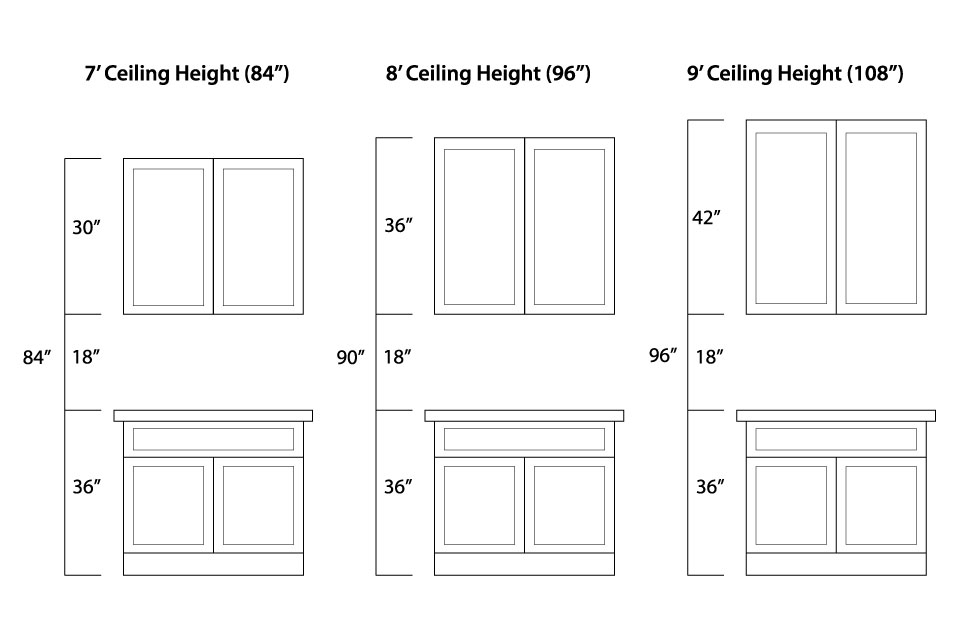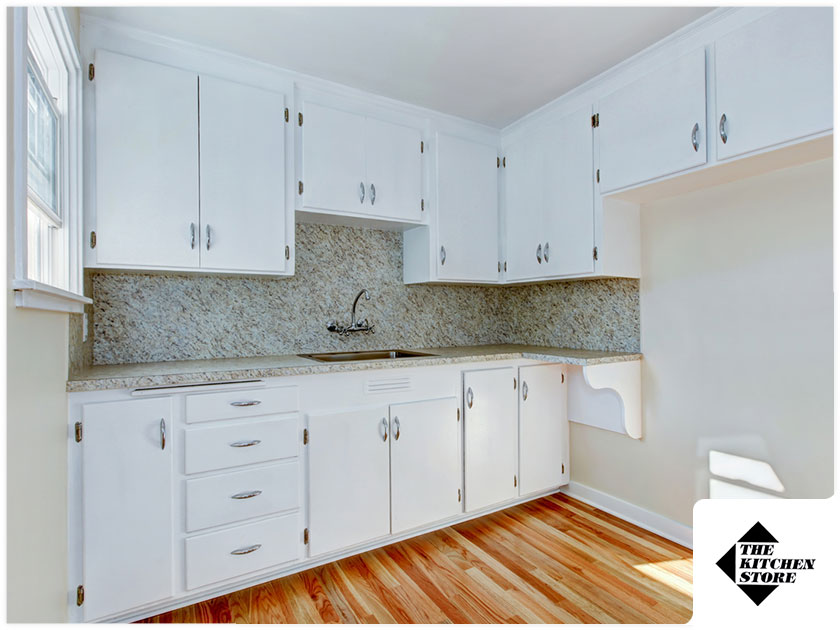Standard Height Considerations

The standard height of kitchen cabinets is a crucial factor in creating a functional and aesthetically pleasing kitchen. This height has evolved over time, influenced by various factors, including ergonomic principles, accessibility needs, and changing design trends. Understanding the rationale behind these standards is essential for homeowners and designers alike when planning a new kitchen or renovating an existing one.
Historical Evolution of Standard Kitchen Cabinet Heights
The history of kitchen cabinet heights reveals a gradual shift from functionality to a blend of functionality and aesthetics. Early kitchen cabinets were often designed for practicality, with lower cabinets being tall enough to accommodate large pots and pans. As kitchen design evolved, the focus shifted towards ergonomics and accessibility. The standard height of upper cabinets, for example, was initially quite low, making it difficult for shorter individuals to reach the top shelves. However, as people became taller, the standard height of upper cabinets gradually increased to accommodate the average height of the population. This evolution is a testament to the constant interplay between functionality, accessibility, and design trends in shaping kitchen cabinet heights.
Standard Height Ranges and Variations: Standard Height Between Upper And Lower Cabinets

The standard height for kitchen cabinets is a crucial factor in achieving optimal functionality and aesthetics. It determines the overall accessibility, comfort, and visual appeal of your kitchen space. While there are established standards, variations can occur based on design preferences and individual needs.
Standard Height Ranges
The most common standard height ranges for upper and lower cabinets are as follows:
| Cabinet Type | Standard Height (inches) | Standard Height (centimeters) |
|---|---|---|
| Lower Cabinets | 34.5 – 36 | 87.6 – 91.4 |
| Upper Cabinets | 30 – 36 | 76.2 – 91.4 |
The standard height for lower cabinets is typically around 34.5 to 36 inches (87.6 to 91.4 centimeters), allowing for comfortable reach and ample workspace. Upper cabinets, on the other hand, are typically installed between 30 and 36 inches (76.2 and 91.4 centimeters) high, ensuring sufficient headroom and accessibility.
Variations in Standard Heights
The standard height ranges for cabinets can vary based on specific kitchen design styles.
Traditional Kitchens
Traditional kitchens often feature taller upper cabinets, typically reaching up to 42 inches (106.7 centimeters) high. This creates a sense of grandeur and formality.
Modern Kitchens
Modern kitchens often embrace sleek and minimalist designs. Upper cabinets in modern kitchens tend to be lower, ranging from 28 to 30 inches (71.1 to 76.2 centimeters) high. This creates a more open and airy feel.
Contemporary Kitchens
Contemporary kitchens often feature a combination of upper and lower cabinets with varying heights. This can create a visually interesting and dynamic look. For example, a bank of tall upper cabinets might be juxtaposed with a row of lower cabinets, adding depth and dimension to the kitchen design.
Factors Influencing Height Customization

While standard cabinet heights offer a practical starting point, recognizing that kitchens are uniquely designed for each individual’s needs and preferences is crucial. Considering individual factors is paramount when determining the optimal height for upper and lower cabinets. These factors influence the functionality, accessibility, and overall comfort of the kitchen space.
Impact of Individual Factors on Customization, Standard height between upper and lower cabinets
The optimal cabinet height varies based on factors like personal height, reach, and kitchen layout.
- Personal Height: Individuals of different heights have varying reach capabilities. For taller individuals, standard upper cabinets may feel too low, hindering access to stored items. Conversely, shorter individuals might find it challenging to reach the upper shelves without a step stool. Adjusting cabinet heights to align with personal height ensures ergonomic and comfortable usage.
- Reach: Reach, which is the distance a person can comfortably reach, varies between individuals. Even people of similar heights might have different reach capabilities due to factors like arm length and flexibility. Customized cabinet heights ensure optimal access and reduce the need for excessive stretching or straining.
- Kitchen Layout: The layout of the kitchen plays a significant role in determining the optimal cabinet height. In smaller kitchens, maximizing vertical space is crucial. Raising the upper cabinets can increase storage capacity while maintaining adequate countertop space. Conversely, in spacious kitchens, lowering the upper cabinets can enhance visual appeal and create a more inviting ambiance.
Pros and Cons of Adjusting Standard Cabinet Heights
Adjusting standard cabinet heights can significantly enhance the functionality and aesthetics of a kitchen.
| Factor | Pros | Cons |
|---|---|---|
| Accessibility | Increased accessibility for individuals of all heights, reducing the need for step stools or reaching beyond comfortable limits. | Potentially higher cost for custom cabinets compared to standard options. |
| Ergonomics | Improved posture and reduced strain on the back and neck, promoting a more comfortable kitchen experience. | Increased complexity in the installation process, potentially requiring specialized expertise. |
| Storage Capacity | Maximized storage space by utilizing vertical space efficiently, especially in smaller kitchens. | Potentially limited availability of pre-fabricated cabinets in non-standard heights, leading to longer lead times or custom fabrication. |
| Aesthetics | Enhanced visual appeal and a more cohesive kitchen design, particularly when cabinets are adjusted to complement the overall layout and style. | Potential for a less streamlined appearance if the adjusted cabinet heights are not carefully considered and integrated into the overall design. |
The standard height between upper and lower cabinets, often referred to as the “golden triangle,” is a crucial aspect of kitchen design, allowing for optimal functionality and flow. This harmonious balance can be further enhanced by incorporating a touch of serenity and sophistication with steel blue kitchen cabinets , which evoke a sense of calm and tranquility.
This thoughtful consideration of both functionality and aesthetics creates a space that is not only efficient but also a haven of peace and inspiration.
The standard height between upper and lower cabinets is a matter of practicality, ensuring both functionality and comfort. But beyond the practicality, consider the spirit of your kitchen – a space where nourishment is both physical and spiritual. A bold choice like cornflower blue kitchen cabinets can infuse your kitchen with a sense of serenity and joy, a space that invites you to pause and savor the simple pleasures.
And with the right height between upper and lower cabinets, you’ll find yourself moving through your kitchen with ease, a sense of harmony that extends beyond the physical space and into your very being.
